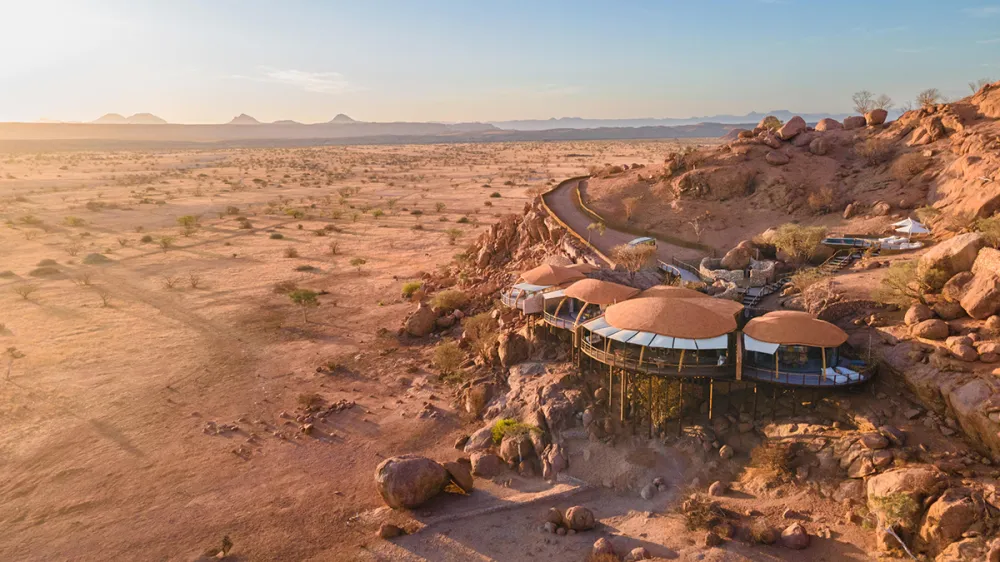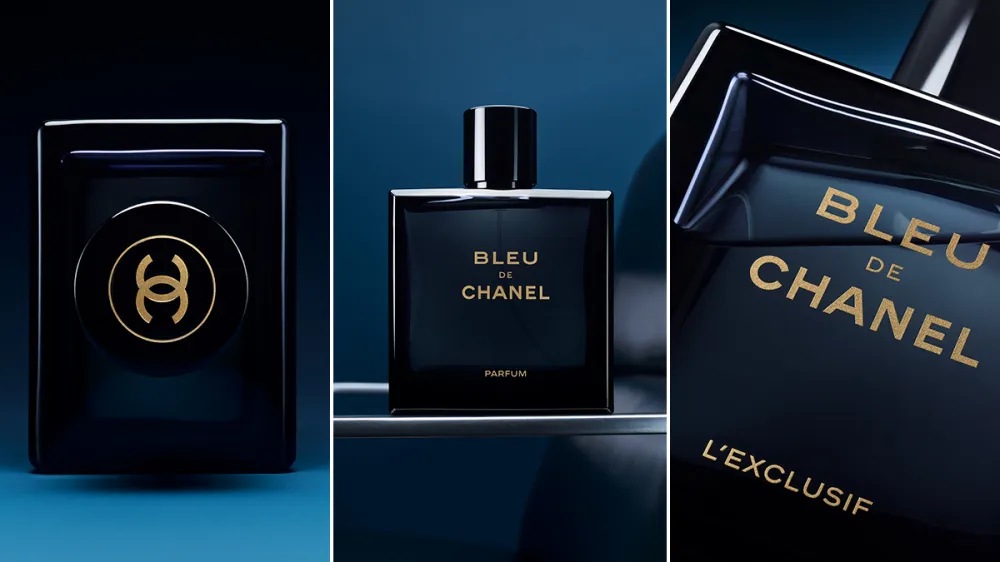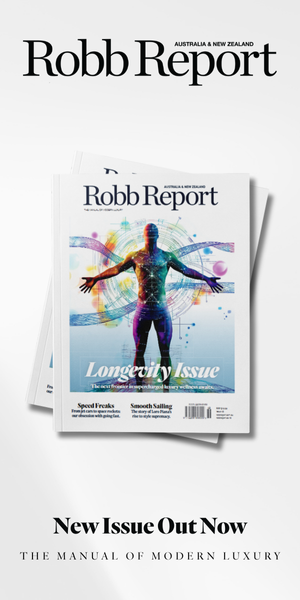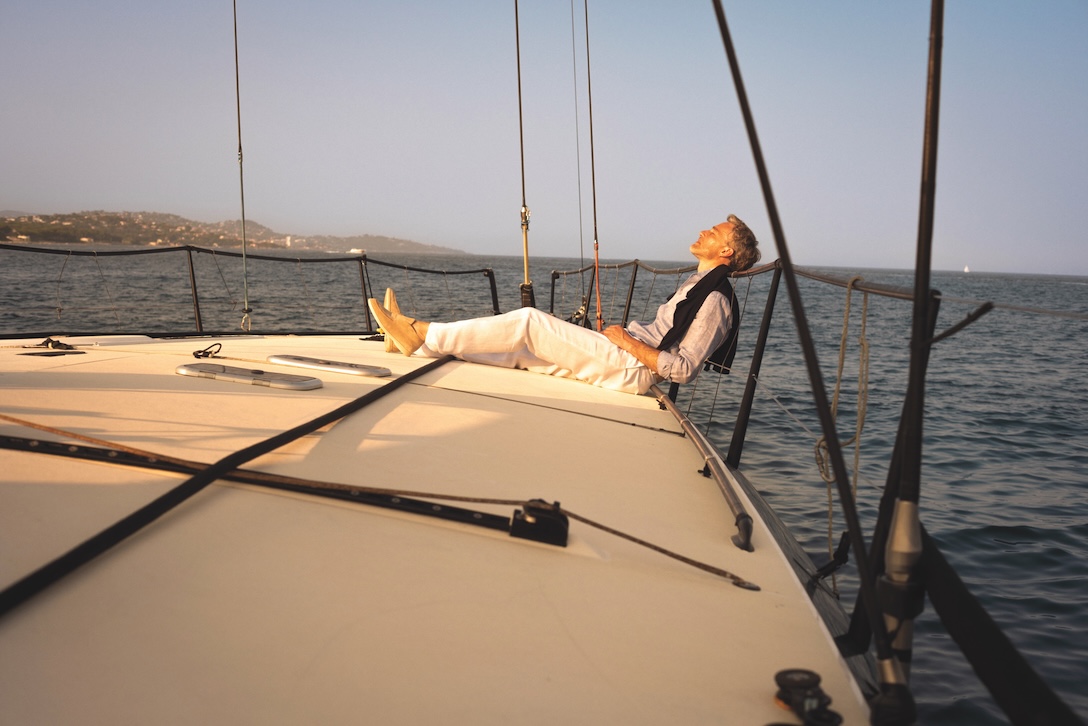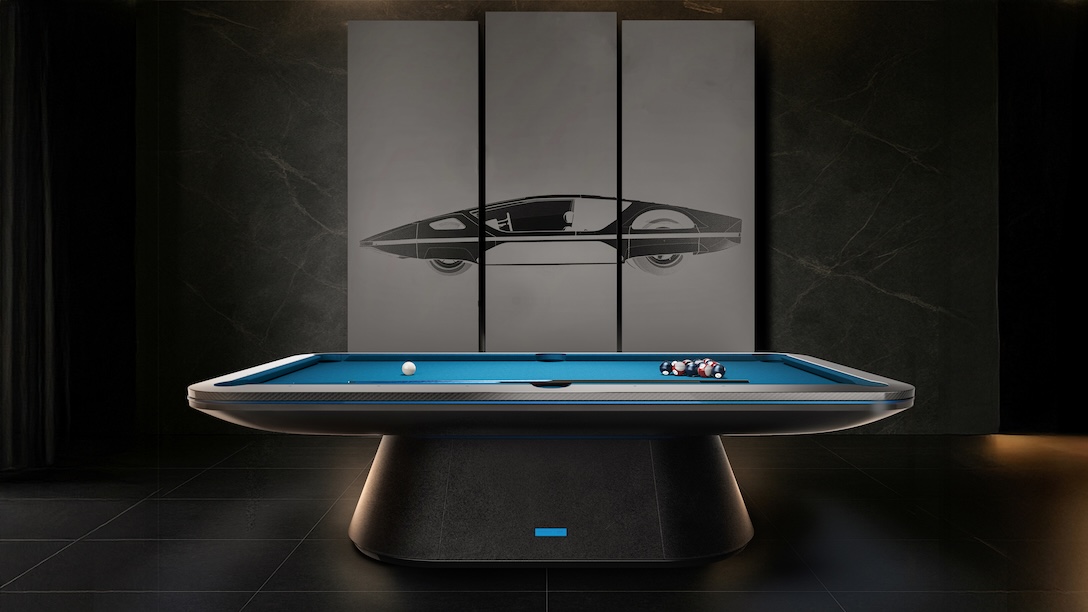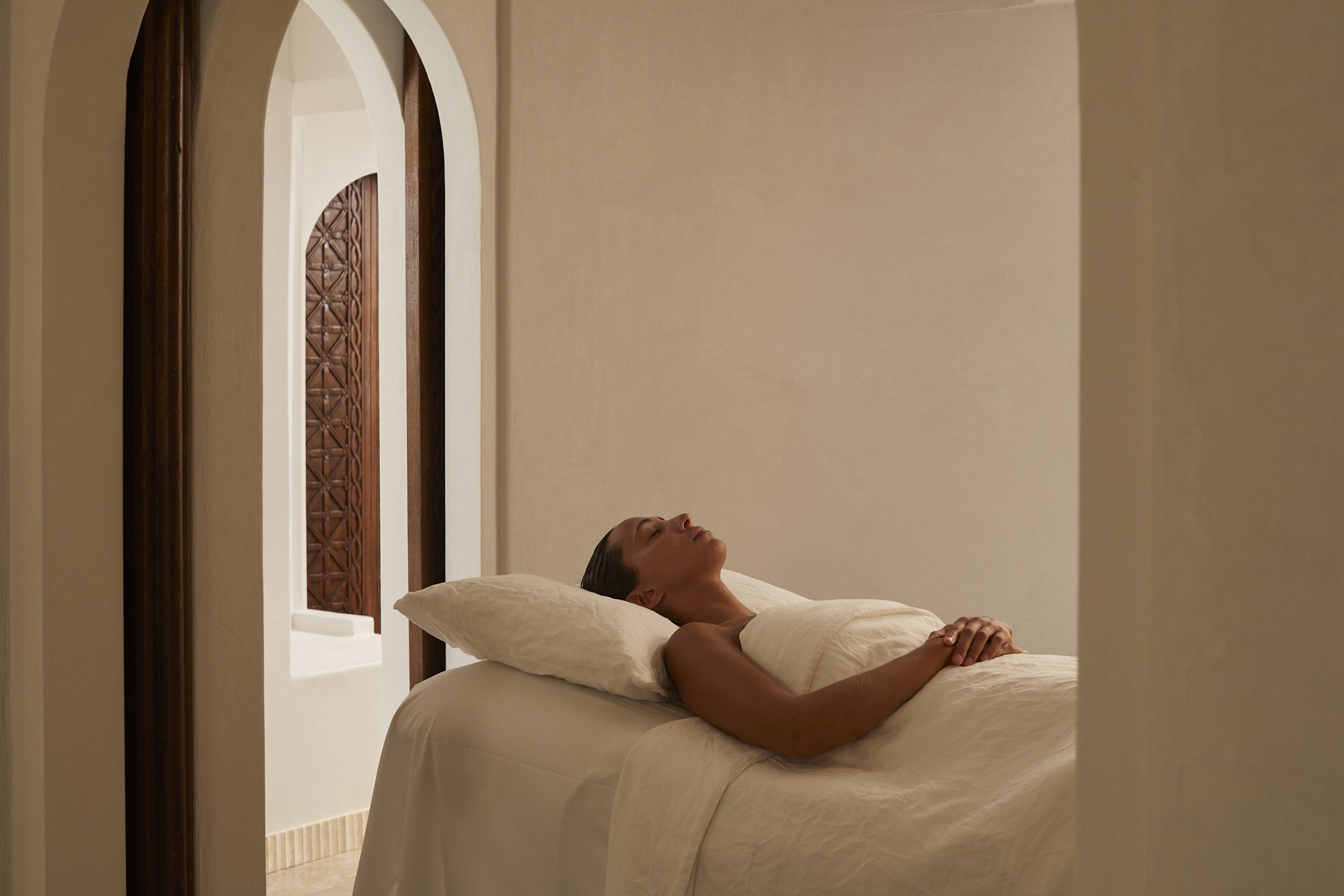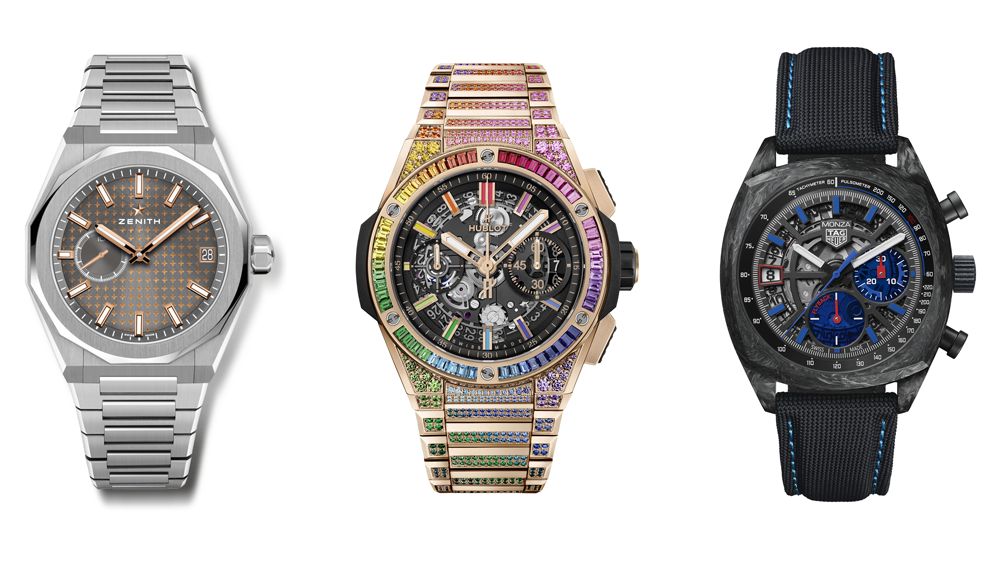
What We Learnt At LVMH Watch Week
Big, bold and bright – the best the of the week that was for Hublot, Bulgari, TAG Heuer and Zenith.
Related articles
LVMH Watch Week rang in the new year in Singapore with a slew of new models from Hublot, Zenith, Tag Heuer and Bulgari.
The luxury conglomerate has wisely been releasing new models each January (debuting with an ultra-luxe show in Dubai in 2020) ahead of April’s Watches & Wonders when most watch brands traditionally show their new key product for the year.
The takeaway in 2023 is that most of the collections were permeated with bright saturations of colour in dials, gem-setting or sapphire crystal cases. The overall vibe is a decidedly cheerful outlook, at least as far as this luxury conglomerate is concerned, for a year that is expected to be looming with economic challenges. Here are some of the highlights.
Hublot
Want to make sure your wrist candy can be spotted across the room? Hublot has no shortage of options for you. From fully gem-set pavé rainbow watches to vibrant sapphire crystal timepieces with skeleton movements in neon yellow and a punchy purple, these models live up to the “Big Bang” in their name. With complicated movements and in-your-face design, they mean business but they’re also dressed for the party.
Big Bang Integrated + Time-Only Rainbow
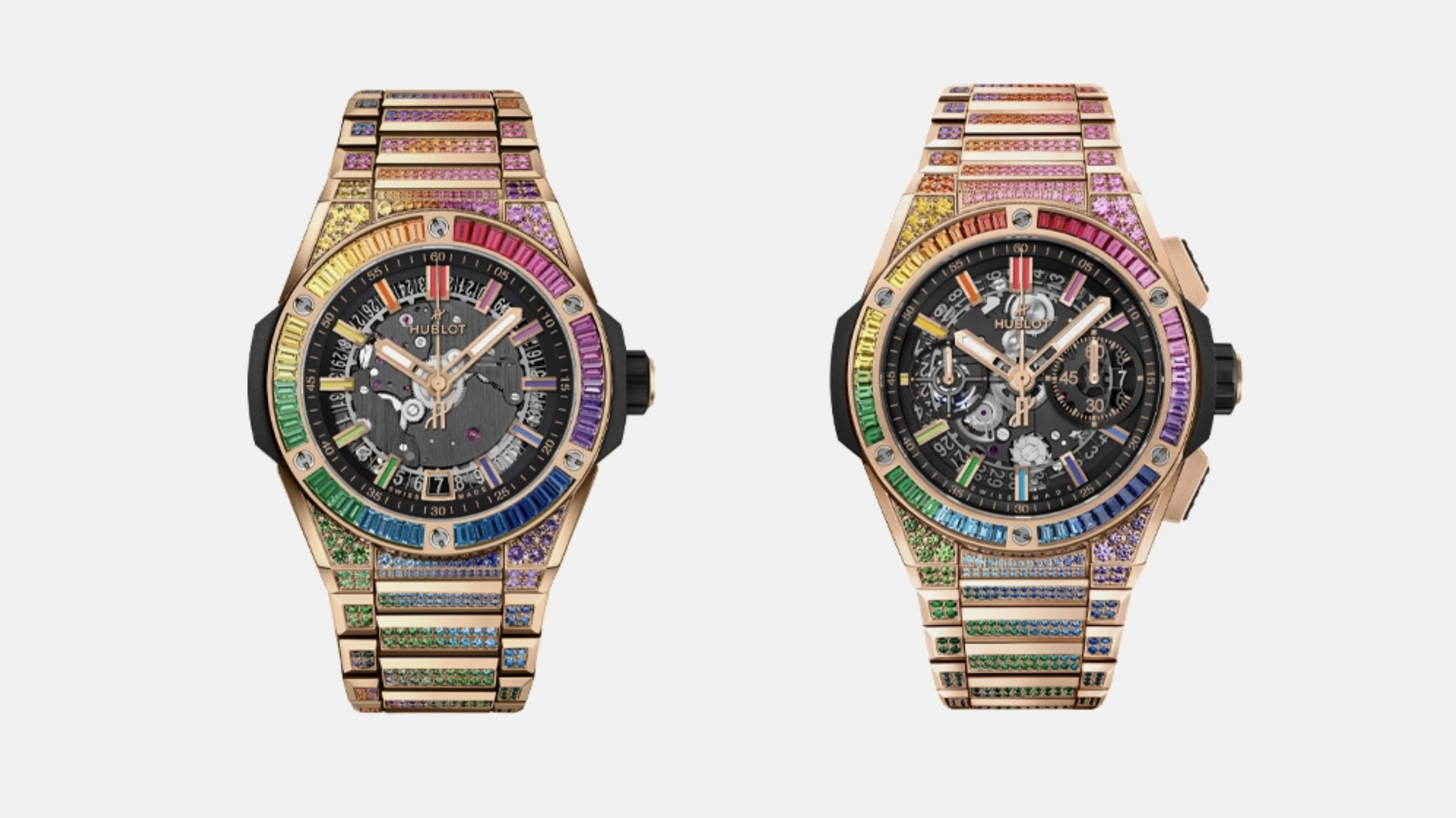
Just when you think there cannot possibly be another flex on the gem-set rainbow watch, Hublot comes along and puts yet another new spin on the cult-favorite style. The Big Bang models—an integrated self-winding chronograph and a time-only version—are executed with the usual array of multi-colored gemstones from rubies and amethysts to blue topaz, orange sapphire and more but this time around they come mixed. Pink sapphire blend into orange sapphires and blue topaz blends into tsavorites on the center bracelet links mimicking the rays of color in the natural weather phenomenon. The integrated model comes set with a total of 1,290 gemstones, while the time-only iteration sports 1,100. Hublot, as we mentioned, is always keen to make a splash.
Price: TBD
Case Size: 42 mm and 40 mm
Case Material: 18-karat King Gold
Spirit of Big Bang Carbon Blue and Purple Sapphire

Hublot has yet to release the full info on its Spirit of Big Bang models as of press time, but judging from the photos the Carbon Blue model takes after the Spirit of Big Bang Tourbillon that debuted in January 2021 which was executed in a carbon case with white micro-glass fibers. Here those fibers take on a baby blue hue and the case is paired with a rubber strap in the same color to match.

But Hublot is known for its work with colored sapphire crystal cases, so the model was also created in a striking purple variant of the material. Sapphire crystal cases are notoriously expensive as a result of their difficulty to machine, which is why you see so few of these in the market. But the company was an early adopter of the use of the material and therefore capitalizes on it each year.
Big Bang Tourbillon Yellow Neon Saxem

At first glance, this looks like another iteration of Hublot’s exuberantly colorful sapphire crystal cases, but this Big Bang is made of something else altogether. It’s called Saxem, a material used in satellite technology that has even more brilliance than colored sapphire. It took three years for Hublot to develop the material in bright, neon yellow, which it describes as a fluorescent shade of acid yellow. Saxem (which stands for sapphire aluminum oxide and rare Earth mineral) was first used in 2019 in a shade of emerald green on the Big Bang MP-11. Like sapphire, it is transparent and incredibly scratch and chip resistant. The automatic tourbillon caliber HUB6035 is skeletonized and uses a micro-rotor so that plenty of light passes through the case and, because it’s transparent, you can see it from all sides. It comes on a neon-yellow rubber strap, color matched to the case.
Price: approx $433,000, limited to 50
Case Size: 44 mm x 14.40 mm
Case Material: Saxem
Big Bang Unico Sorai

Hublot has long sponsored sports heroes, but recently the company dovetailed into conservation issues, in some cases overlapping the two areas. This watch is Hublot’s third limited edition dedicated to an animal conservation organization run by former England International cricket champ, Kevin Pietersen. It’s called Saving Our Rhinos Africa & India (SORAI for short), and it focuses on protecting rhinoceroses from poachers. The dial is trimmed with colors of the sunset representing the heightened danger from poachers faced by rhinos at nightfall when the poachers pounce. Sadly, rhino horns are worth more per kilo than gold. The Unico Sorai contains the automatic caliber UNICO 2 and comes with either a gray fabric strap or a black rubber strap with black, orange and purple camouflage pattern.
Price: $34,583, limited to 100
Case Size: 44 mm x 14.50 mm
Case Material: Gray ceramic
Zenith
Zenith is juicing up its Defy collection, the brand’s launchpad line for showcasing its most advanced technology, materials and modern designs.
Defy Skyline Skeleton

The new lineup is headlined by the Defy Skyline Skeleton, an openworked version of the El Primero caliber 3620 SK, with a frequency of 36,000 vph and a 60-hour power reserve. Built with an architecture similar to the El Primero 3600 chronograph caliber, the automatic movement drives a 1/10th of a second hand directly from the escapement. It famously displays the fraction-of-a-second indication on the dial, a spectacle almost upstaged by the bold, colored (black or blue) bridges. They’re formed in a four-pointed star to evoke Zenith’s double Z logo of the 1960s. Otherwise, everything about this watch is modern, including the openworked design, state-of-the-art movement and heavily lumed hands and markers—a must for reading time on a skeletonized watch, which generally has a lot going on in the background.
Price: $23,000
Case Size: 41 mm
Case Material: Steel
Defy Extreme Glacier

The Defy Extreme Glacier is the priciest of the new models and a boutique-only edition. It harnesses the power of the most advanced version of Zenith’s El Primero movements, caliber 9004, capable of timing events to 1/100th of a second. It’s the highest-frequency chronograph in regular production today, and it struts its stuff on the dial: You can see the chronograph seconds hand whipping around the dial once every second. The Defy Extreme is all about, as its name suggests, extreme watchmaking and rugged sports, and was “inspired by the raw beauty of wild terrains” according to Zenith. The Glacier represents the opposite landscape of the Defy Extreme Desert launched in 2021 and is a cooler take on the model. Accordingly, it has an unusual decorative element representing the winter palette: The pusher guards and outer bezel are made of chalcedony, a semi-translucent, fairly tough quartz stone with a pale blue hue. Each piece is cut and polished by hand, and because their matrix and hue can vary slightly, each of the 50 examples of the Defy Extreme Glacier is unique. The case is titanium, which eliminates the potentially uncomfortable heaviness of a large watch—this one is a whopping 45 mm wide. It comes on a Velcro or white rubber strap.
Price: $37,100, limited to 50
Case Size: 45 mm
Case Material: Titanium
Defy Skyline

The Defy Skyline, the sporty everyday piece Zenith introduced last year in 41 mm, now comes in a more unisex-friendly 36 mm size. Keeping pace with the trend for bright dial colors that has been pervasive across the watch industry, the model now comes in pink, lime green and light blue dial colors. The dials are notched in a star-shaped pattern for extra glitter. It comes on a steel bracelet or optional starry-patterned rubber strap to match the dial colors. The movement is the Elite 670 automatic, with a 50-hour power reserve.Price: $12,500 to $17,000
Case Size: 36 MM
Case Material: Steel
Defy Skyline Boutique Edition

Back to the more manly size, there is a new 41 mm Boutique Edition of the Defy Skyline, with a dial designed in a gray and gold version of the star pattern – like stars in the night sky. It contains the El Primero caliber 3620, so it includes the dramatic 1/10th of a second indicator in a subdial. With a price tag of $16,000, this handsome piece and the 36 mm ones above, make for compelling alternatives to significantly more expensive pieces of similar designs from other Swiss brands.
Price: approx $16,000
Case Size: 41 MM
Case Material: Steel
Tag Heuer
Tag Heuer Monza Flyback Chronometre

It’s not easy to continuously update an icon over the years without compromising the original design, but the Monza Flyback Chronometre is a futuristic refresh that enhances rather than detracts from the spirit of the 1976 original. The carbon case emphasizes the model’s signature cushion shape while taking it into the future. Adding to the sporty vibe are translucent fumé blue sapphire crystals over the subdials at 3 and 6 o’clock, which also emphasize the model’s original purpose: motorsports timing. As does the new movement, flyback chronograph caliber Heuer 02, previously used only in the Autavia. The lumed date window at 9 adds to the functionality and the modern cool vibe. The lacquered hands and indexes also glow blue in low light. Racing red details, along with a tachymetre and pulsometre, add to the racing vibe.
Price: TBD
Case Material: Carbon
Case Size: 42 mm
Carrera Chronograph 60th Anniversary

The Carrera was launched in 1963, and over the past six decades, it has become an important pillar for the company. The anniversary edition is a remake of the fan favorite, the ref. 2447 SN, introduced in the late ’60s. It represents the second series of Carreras and comes in a panda design featuring a silvered dial with black subdials (SN in the reference number stands for “silver” and “noir”). It also repeats the striped markers and hands of the original, along with the double index markers at 12 o’clock. The position of the 60-minute counters is reversed compared to the original, but otherwise, it’s a faithful reproduction, with the addition of Super-LumiNova and a modern movement, the Heuer 02. This is a 600-piece limited edition but stay tuned for more anniversary pieces later in the year.
Price: TBD
Case Material: Steel
Case Size: 39 mm
Bulgari
In between shattering one world record after another for micro-thin watchmaking, Bulgari can also be consistently relied upon to honor its roots as a master jeweler, with colorful, gem-laden jewellery watches. Here are the latest drool-worthy diamond and gemstone watches in its Allegra, Serpenti and Diva’s Dream collections, set to be launched next week during LVMH Watch Week in New York.
Serpenti Tubogas Infinity

The serpent, a symbol of vitality and passion, has become Bulgari’s most recognizable motif, expressed here in a rendition that, comparatively speaking, is quite refined. The latest version of the iconic Serpenti comes with diamonds slithering down the wrap-around bracelet to further hone in on its character. The “Tubogas” in the name refers to the particular intricate engineering of the bracelet, with gold links that coil around the wrist like a snake. It is set with a total of 486 diamonds weighing 5.85 carats, set into the case, dial and bracelet. The movement is quartz.
Price: approximately $98,000
Case Material: 18-karat gold
Diva’s Dream

The gems in the Diva’s Dream collection demonstrate the subtle art of color blocking, using perfectly matched hues and sizes of stones and alternating them with gems of another color. There are three variations: amethyst (1.21 carats) paired with pink tourmaline (1.33 carats); topaz (1.56 carats) with tanzanite (1.45 carats); and all ruby (3.5 carats), with perky red hands to match the gems. In between the prong-set colored gems are stations of gold flutes—sculptural representations of this collection’s signature motif, the fan-shaped ginkgo leaf. The bezel and leaves are set with 1.51 carats of diamonds. The design is inspired by Bulgari brooches and necklaces of the 1980s and ’90s, with large, brightly colored gems in various sizes. The movement, as in most high jewellery watches, is quartz. The 33mm cases are rose gold.
Price: Approximately $69,800 for the ruby version; approximately $45,100 for amethyst and tourmaline; and approximately $45,100 for topaz and tanzanite.
Case Material: 18-karat rose gold
Case Size: 33 mm
Allegra
The Allegra line showcases Bulgari’s trademark ingredient: big, brightly colored gems in seemingly random cuts and sizes, arranged in a design that is freeform yet harmonious. It looks easy but from matching the gems to cutting, arranging and setting them, there is a lot of expertise involved in creating each piece. They are variously set with tourmalines, citrines, rhodolites, peridots, yellow sapphires and pink sapphires for one of the brand’s most exuberant expressions of La Dolce Vita. The gems are set prong style with open backs, the goal of which is to have as little metal as possible surrounding the gems in order to allow for plenty of light return, making the colors pop like neon. They contain quartz movements and are priced at €32,100
Diva’s Dream Mosaica

This model also celebrates the ginkgo leaf motif, but in a way that is closer to its initial source of inspiration, the mosaics on the floors of Rome’s Baths of Caracalla. There are two versions, one fully set with a gradient of 3.5 carats of sapphires ranging from pale pink to magenta, in white gold; and the other with 3 carats of blue sapphires ranging from sky blue to deep azure, set in white gold. They are interspersed with arc-shaped panels set with diamonds. Even the diamond-set links on the bracelet of the white gold/blue sapphire model are shaped like gingko leaves, with an overall effect that, in pure high-jewellery style, is crafted more like jewellery than a typical watch bracelet. The pink version has a strap connected to decorative lugs that also take the shape of the gingko leaf. The middle case is set with diamonds, so the watch sparkles from every angle. This one is a slightly larger canvas, with a 37 mm rose or white gold case. Each contains the automatic caliber BVL 191.
Price: Approximately $80,570 and approximately $139,650 for the blue sapphire
Case Material: 18-karat white gold or rose goldhttps://robbreport.com/style/watch-collector/hublot-zenith-bulgari-tag-heuer-debut-new-watches-for-1234793076/
Case Size: 37 mm
Subscribe to the Newsletter
Recommended for you
Chasing the Sun: Parmigiani Fleurier’s Summer Statement
Parmigiani Fleurier’s Tonda PF Sport Chronograph Sandstone is dreaming of a Mediterranean summer.
September 29, 2025
The 13 Best Watches at the Emmys, From Noah Wyle’s Cartier to Tramell Tillman’s Audemars Piguet
This year’s awards included big names like Noah Wyle and Tramell Tillman, showcasing plenty of stunning timepieces on the red carpet.
By Nicole Hoey
September 18, 2025
You may also like.
You may also like.
Inside the $30 Billion Obsession Among the Ultra-Wealthy : A Race to Live Longer
The pursuit of an extended life has become a new asset class for those who already own the jets, the vineyards, and the art collections. The only precious resource left to conquer, it seems, is time.
If you want to know what the latest obsession is these days among the ultra-wealthy, listen in at dinner.
Once it was crypto, then came AI and psychedelics, now it’s longevity all the time. The talk is of biomarkers, NAD+ levels, and methylation clocks, of senolytics and stem cells. Guests compare blood panels like wine lists, and the most important name to drop is no longer your banker or contact at Rolex but your longevity physician. For those just arriving at the conversation, the new science can sound like science fiction—but it’s fast becoming the lingua franca of money.
The field has its own vocabulary—epigenetic reprogramming, which aims to reset cellular clocks; cellular senescence clearance, the removal of “zombie” cells that clog our systems as we age; precision gene therapies, designed to personalise interventions at the level of DNA—that sounds equal parts Brave New World and Wall Street pitch deck. But make no mistake: this is no longer a niche pursuit. The sector is already worth an estimated $30 billion globally and projected to surpass $120 billion within the decade, having attracted billions in investment from the likes of Altos Labs, Juvenescence and Google-backed Calico. Tech titans and old-money families alike are staking claims on the possibility of an extra decade or two. It’s a space where venture funds court Nobel laureates, hedge funds bankroll gene-therapy moonshots, and even wellness festivals in Australia draw rock-star scientists to the stage.
The Poster Child and the Pitch
David Sinclair, the Sydney-born Harvard geneticist who has become something of a poster child for the field, is quick to underline the stakes. “We’re not just talking about lifespan, we’re talking about health span,” he tells Robb Report. “Extending the number of years people live well—without frailty, without disease—isn’t just a medical breakthrough. It’s a social and economic one.” Sinclair, whose research ranges from NAD boosters to epigenetic age-reversal therapies, has calculated that adding a single year of healthy life to the US population, for example, could be worth $38 trillion in economic benefit—fewer years of costly aged care, less burden on hospitals, more years of productivity and compounding returns. In other words, the dividends of health are financial as well as personal. “That’s why governments and investors are paying attention,” he says.
Sinclair has become a fixture on the global circuit, drawing crowds that rival TED or Davos. As Radek Sali, the Australian entrepreneur behind the new Wanderlust Wellspring longevity festival taking place on the Gold Coast this October, where Sinclair is the keynote speaker, puts it: “Wellness has moved into the realm of entertainment.” At Wellspring, platinum-tier guests pay up to nearly $2,000 for the privilege of hearing scientists and investors share the stage over a weekend like headliners at Coachella.
Investing in Time
And then there are the sideshows. Bryan Johnson, the tech mogul turned human guinea pig, makes headlines with his open-source, organ-by-organ data tracking—his infamous “penis readings” have become cocktail-party fodder. While many dismiss him as a parody of the field, his multimillion-dollar project Blueprint has nevertheless made longevity impossible to ignore in the mainstream.
For the uninitiated, the science of longevity today is no longer about vitamin salesmen or fringe dietary regimes. This is the new frontier—one where biology is not just observed but engineered, and where investors smell opportunity on par with space travel. It’s little wonder that Altos Labs has raised billions to chase cellular rejuvenation, or that Juvenescence has secured more than $400 million to fast-track therapies. What was once the realm of eccentric tinkerers now attracts sovereign wealth funds.
“This body takes me to meetings, earns me money—why not invest time and money into it?”
The appeal to the One Percent is obvious. Longevity is a natural extension of portfolio thinking: diversify your assets, hedge your risks, and above all, maximise return on investment. Except in this case, the returns are measured in years of health, energy and cognition. As Andrew Banks, a Sydney-based entrepreneur and early investor in Juvenescence, explains: “This body takes me to meetings, earns me money—why not invest time and money into it?” His Point Piper home teems with contraptions—a Reoxy breathing machine, hydrogen therapy, red-light sauna, and he spends a few hours a day on maintenance, as if his body were a private equity stake.
Banks, like others in his cohort, is baffled that more wealthy men haven’t followed suit. “Entrepreneurs pride themselves on divergent thinking,” he says. “They expand, dream and create businesses with it. But when it comes to their bodies, they’re convergent—unimaginative. The lack of curiosity is astonishing to me.”
Medicine 3.0 and the New Rituals
Steve Grace, a Sydney-based entrepreneur and the proprietor of exclusive private networking club The Pillars, which is opening a longevity program, thinks there is a reckoning coming for those who do not take matters into their own hands. “As someone who has run a few recruitment businesses,” he says, “I can tell you that if you’re a man or woman in your 50s and working as an employee, even in a really good position, it’s time to get worried about job security and being aged out of the workforce. You have to make yourself as vital as possible and become the best version of yourself, or you’re toast.”
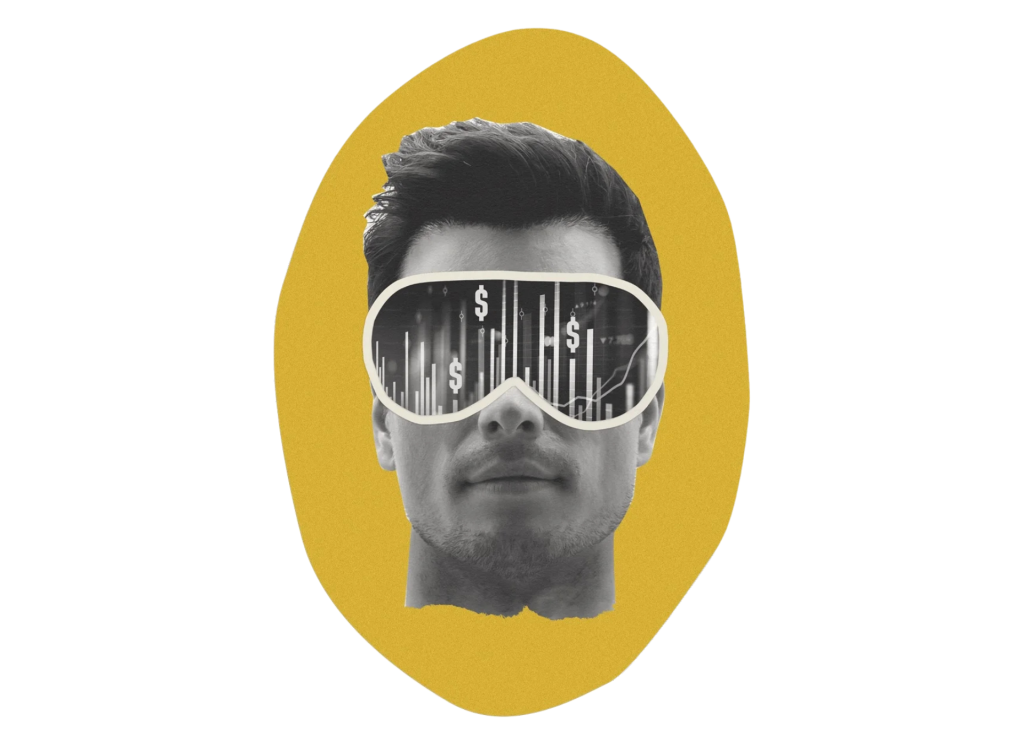
What was once fringe has now become a cultural necessity for those who can afford anything, with science finally catching up to ambition. Sinclair’s lab at Harvard recently published a study on the reversibility of cellular ageing—restoring vision in blind mice and setting the stage for human trials in conditions like glaucoma. In Boston, his company Life Biosciences will begin treating patients with blindness in a Phase I trial using partial cellular reprogramming early next year. “This isn’t science fiction anymore,” Sinclair says. “We’re at the point where we can reprogram cells, turn back their biological clocks, and restore function.”
Meanwhile, practitioners like Dr. Adam Brown of the Longevity Institute in the Sydney suburb of Double Bay are reinventing diagnostics. His “assessment menu” has been compared—only half-jokingly—to a Michelin Guide for medical testing: full-body MRI scans, continuous glucose monitors, polygenic risk scores. “What we do is proactive, not reactive,” he says. “Correct deficiencies first, then optimise health. That’s how you get peak performance in the short term and resilience in the long term.” Brown frames longevity in terms that would resonate with any investor: “There’s a short-term ROI—fixing glucose or sleep issues so you perform better tomorrow. And there’s a long-term ROI—functioning in your 70s as you would in your 40s. That’s extending your career, your income potential and your independence.”
“Once upon a time, male vanity meant injectables, veneers and a tan. Today, it’s VO2 max scores and continuous glucose monitor readouts.”
Peter Attia, the Canadian-American physician and podcast host who has helped popularise the concept of “Medicine 3.0”, echoes this emphasis. Medicine 1.0, according to him, was about surviving infections. Medicine 2.0 was about treating chronic disease. Medicine 3.0 is about staying ahead of decline: measuring, monitoring and intervening early. “The goal is not just to avoid disease but to lengthen health span,” Attia has said.
For those already converted, longevity is less about lab science than daily rituals. Sydney-based Chief Brabon, who trains CEOs like athletes, says: “These men are like Formula One cars—you don’t wait until the tyres are bald before swapping them. You keep everything tuned, precise, optimised.”
That tuning now involves more gadgets than ever: hyperbaric oxygen chambers, cryotherapy, sauna/cold-plunge circuits, peptide stacks, nootropics. And yes, a glut of supplements, some with evidence, others little more than wishful thinking. Once upon a time, male vanity meant injectables, veneers and a tan. Today, it’s VO2 max scores and continuous glucose monitor readouts. “Health is the new flex,” as Steve Grace quipped, glancing at his wrist-worn biometric tracker.
The New Flex: Health as the Ultimate Luxury
Still, there is plenty of scepticism. Some therapies are unproven, others prohibitively expensive. And there is the unavoidable fact that many leading scientists, including Sinclair, have stakes in companies producing supplements and therapeutics, raising eyebrows about conflicts of interest. “The difference,” Sinclair insists, “is whether it’s backed by peer-reviewed science and measurable biomarkers. If it can’t be quantified, it’s marketing, not medicine.”
Then there are the contradictions. It promises democratisation while often priced like a private club. It champions science but thrives on hype. It seeks to extend health span but risks deepening class divides. “Only if we let it,” Sinclair says when asked if longevity risks becoming the preserve of the wealthy. “Like antibiotics or aspirin, these advances should become widely available and affordable once they scale.” Sali agrees, but from another angle: “Biohacking doesn’t have to be expensive,” he says. “The blue zones prove that—community, diet, movement, purpose. Those are free. Wellspring is about making that knowledge accessible.”
And yet, for all its shortcomings, the movement is here to stay. Investment continues to pour in. Technology—like senolytic drugs that clear aged cells or AI-driven platforms that predict individual disease risk years in advance—is moving from speculation to clinical trial. Scientists are being recast as influencers. And the wealthy, always in search of the next advantage, have found in longevity a pursuit as old as alchemy, yet dressed in the language of venture capital. The truth is that health has always been an asset. What’s new is that it’s now being traded, optimised and measured like one.
In the end, longevity is less about a moonshot than about curiosity. Banks, Sali, Sinclair, Attia are all, in their own way, betting on time. Perhaps the most radical idea is also the simplest: that the best-performing asset in any portfolio is the body itself. Unlike Bitcoin, it carries you to meetings. Unlike art, it cannot be stored in a vault. Unlike real estate, it is non-transferable.
The new calculus of longevity is the recognition that the ultimate luxury is not wealth or status, but a few more decades of clear thought, strong bones and good company—and the ability to make money off it. Everything else, as one investor put it, is just a rounding error.
You may also like.
By Brad Nash
18/08/2025
04/08/2025
How Sailing Shaped Loro Piana’s Most Iconic Designs
Pier Luigi Loro Piana grew his family textile business into a celebrated fashion house by following his passion for sports on land and at sea.
The Regatta Connection
The race village at Port de Saint-Tropez is awash with people in nautical navy and white, the de facto dress code for the Loro Piana Giraglia regatta. This is the second year the fashion house has lent its name to one of the Mediterranean’s most prestigious summer races. The course zooms from the French coast to Genoa, Italy, taking a sharp turn past Giraglia, a small island off Corsica’s northern tip. It’s the latest in a long line of marine events the brand has sponsored, dating back more than 20 years.
The link between sailing and the brand—and more consequentially the Loro Piana family—is exemplified by the man Robb Report is here to meet: Pier Luigi Loro Piana. An avuncular figure in his 70s with the physique of a man who has enjoyed life, Pier Luigi fell in love with sailing in his late teens, when a family friend took him for a cruise in a sloop.
“Using the wind to go faster or slower, driving the boat like it has an engine, it’s really fascinating,” he says. Inevitably, he started competing. “When you’re sailing, you’re always looking for other boats to go and fight with. It’s an instinct,” he says. And then, with considerable understatement, “I think it’s a nice hobby.”
A Life Under Sail
He currently owns two boats: My Song, which you can see on these pages, is a 25 m sailing yacht that competed in the Regatta. There’s also Masquenada, a comfortable 50 m explorer. It’s a commendable set-up befitting a man who shaped one of Europe’s most celebrated fashion houses.
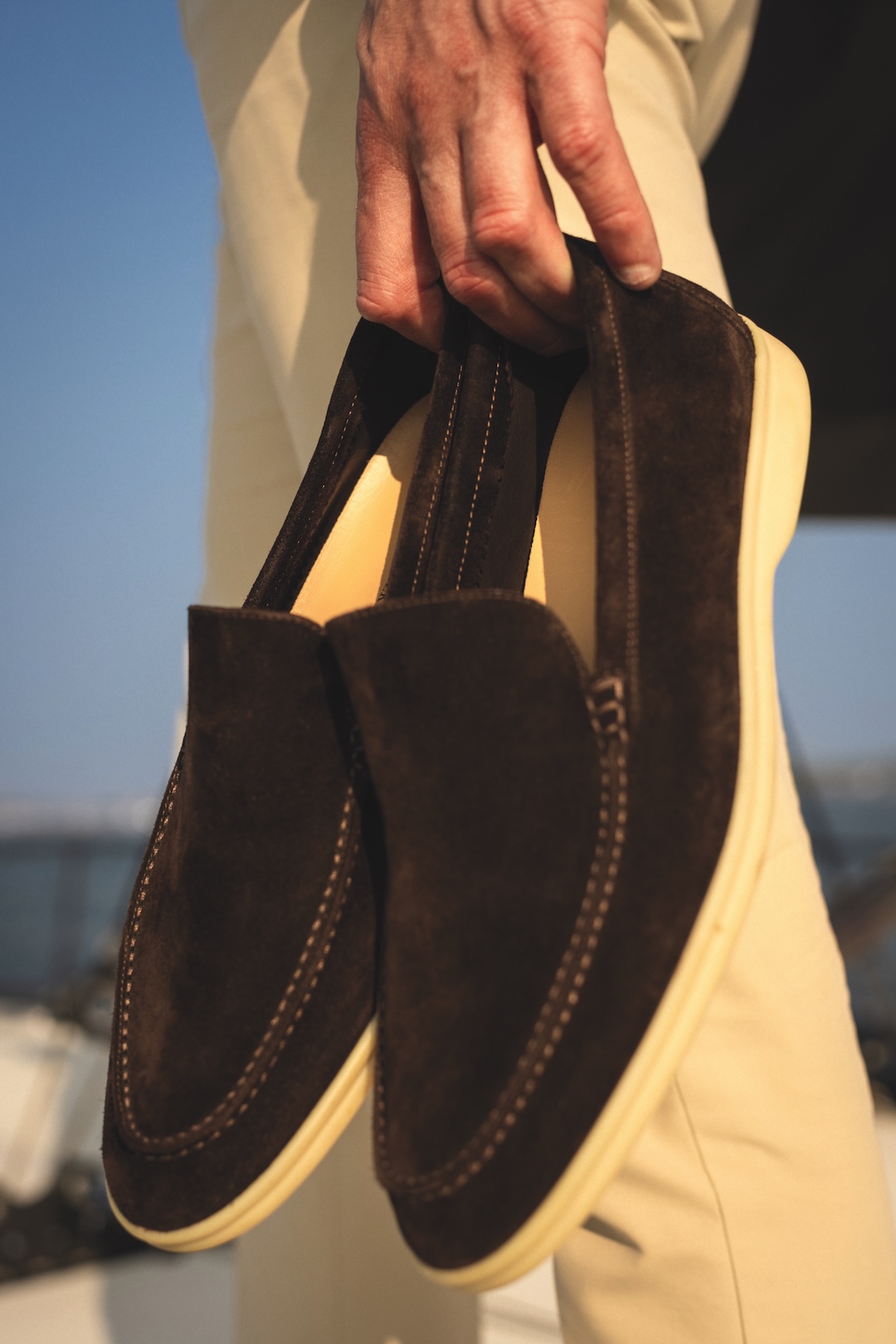
A Family Business Turned Global Powerhouse
The textile and clothing company that bears his family’s name was launched by an ancestor, Pietro Loro Piana, in 1924. A few generations later, Pier Luigi and his brother, Sergio, would run it for four decades until LVMH acquired a majority stake for around $4 billion in 2013. Sergio passed away that year; his widow and Pier Luigi still own a share of the brand between them.
The brothers proved innovative custodians, moving the company upmarket with an insistence on ultra-fine materials and groundbreaking fabrications. And the connection with sports—specifically yachting, horseback riding, skiing and golf—is integral to how the brand positions itself. As Pier Luigi recalls, such associations often had self-serving origins.
“These are the sports my brother and myself were doing,” he says. “We were very committed in business in the 1970s, ’80s, ’90s, so we were like our customers: people that like to work hard but also play hard. And that meant sports.”
Innovation Born of Necessity
This affinity often led them to develop durable, yet elegant, materials and gear for their off-duty pursuits, eventually offering versions to their athletic clientele. “We engineered products with unusual properties, natural fibres like wool or cashmere with a membrane that makes it waterproof and windproof… For research and development, I was the first victim,” he says with a chuckle. Once, he wanted a ski jacket that was “warmer, lighter, softer and better” than nylon models, so he made a prototype to test on the slopes. It gave birth to the Loro Piana Storm System, launched in 1994. The line’s wind-resistant waterproof wool and cashmere has since been used by brands around the world. “I still have this jacket,” he says.

The same process happened on the water. A beloved reversible bomber, with knitted cashmere on one side and waterproof polyester on the other, was born from Pier Luigi’s need for a functional jacket to wear on his yacht. “It’s very light, doesn’t wrinkle, it’s warm, windproof,” he says. “It solves so many problems.”
He takes less credit for perhaps the brand’s most famous—and almost certainly most imitated—product, the white-soled suede Summer Walk loafers. “That was my brother,” he says. “When we were 20, 30 years old, we went sailing and there were only [Sperry] Top-Siders or Sebagos. But when the soles got worn, they got hard and slippery.”
The answer: a non-marking sole with grip—“like a tire you use in Formula 1 when it’s wet”—which Sergio got his bespoke shoemaker to sew to suede uppers. Eventually, they produced two versions: a loafer and the Open Walk, a model with a slightly higher top. “We discovered people were using them also for formal wear because they were so comfortable,” says Pier Luigi. “It’s really a successful story that started from product research.”
And if problem-solving can turn your family business into a giant of global style, clearly it pays to be a little selfish.
You may also like.
The Supercar of Pool Tables
In a rare fusion of Italian design pedigree and artisanal craftsmanship, Pininfarina and Brandt have reframed the barroom game as aerodynamic high art.
In the rarefied realm where leisure meets design, the latest object of desire doesn’t purr down the autostrada—it commands the room from a single sculptural base. The Vici pool table, a collaboration between Italian automotive legend Pininfarina and Miami’s bespoke table-maker Brandt Design Studio, reimagines the game with the same aerodynamic poise and artisanal precision that have graced some of the world’s most beautiful vehicles.
Named for Julius Caesar’s immortal boast—“Veni, vidi, vici”—this limited-edition series transforms billiards from casual diversion into a declaration of style. Every curve is deliberate, from the ultra-thin playing surface clad in tournament-grade Simonis cloth to the seamless integration of Italian nubuck leather and precision-milled metals. The effect is more haute sculpture than barroom pastime—yet it meets exacting professional standards.
For the true connoisseur, the debut PF 95 Anniversario edition celebrates Pininfarina’s 95-year legacy in just 95 numbered pieces. Finished in dark-blue lacquer with rose-gold accents and a flash of red felt, each table is discreetly nameplated—a tangible claim to an heirloom in the making.
“It’s not just about how it plays—it’s about how it lives in a space,” says Dan Brandt, the master craftsman whose work has long graced the world’s most exclusive interiors. Whether anchoring a penthouse salon, a members’ lounge or the main deck of a superyacht, the Vici is designed to stir conversation before the first break.
For those accustomed to Pininfarina’s sleek automotive silhouettes, this is a chance to bring that same lineage of movement, form and Italian refinement into the home. Only now, the horsepower is measured not in engines—but in the geometry of a perfect shot.
From pool to midcentury to Ottoman, we’ve got all the table angles covered at Robb Report Australia & New Zealand —plus more home-worthy pieces.
You may also like.
Ralph Lauren’s Oak Bluffs Collection Is a Masterclass in Classic Summer Style
The capsule honours the heritage of the Martha’s Vineyard community, which has been a haven for generations of Black families.
Building on his partnerships with Morehouse and Spelman colleges, Ralph Lauren now takes us off campus to Oak Bluffs for summer break. A haven for Black communities on Martha’s Vineyard for more than a century, Oak Bluffs’s generations of style and tradition come together in a collection of menswear and womenswear that marries elements of classic collegiate style with coastal leisurewear. “This collection is about more than a charming coastal town; it’s a story of the American dream,” said Ralph Lauren, who called on alumni of the two schools working at Ralph Lauren to conceptualise and design.

As with any story, visuals are key. Lauren enlisted author, director, and producer Cole Brown, who has summered on Martha’s Vineyard for decades, to bring the stories of Oak Bluffs to life. The campaign, which was lensed by photographer Nadine Ijewere and videographer Azariah Bjørvi, both of whom worked on the award-winning Polo Ralph Lauren campaign with Morehouse and Spelman Colleges in 2022. The partnership paid off, with transportive imagery that reads more like a family album than an ad campaign. Anchoring it all is a short documentary that mines archival footage and features the stories of business owners, multi-generational homeowners, and other locals along with Morehouse and Spelman alumni.

“Every piece in this collection tells a story, from quilted souvenir jackets to collegiate crewnecks and cardigans. We’ve captured the spirit of this town—its leisurely summer bike rides, its five-to-seven front porch socials, its nautical traditions—and transformed that into designs that feel as special as the place itself,” David Lauren, the brand’s chief branding and innovation officer, tells Robb Report. The Polo Ralph Lauren for Oak Bluffs collection will be available on RalphLauren.com, the Ralph Lauren app, select Ralph Laure stores, and Morehouse and Spelman College bookstores.

About those front porches: To encourage another century of idyllic, cedar-shingled summers, Ralph Lauren has also partnered with the Cottagers, Inc., a nonprofit of 100 Black female homeowners on Martha’s Vineyard focused on architectural and cultural preservation. The brand is also continuing its partnership with the United Negro College Fund, supporting HBCU scholarships and fostering early talent development and recruitment opportunities.
View the full-length documentary, A Portrait of the American Dream: Oak Bluffs, on YouTube. A special screening and panel discussion will also take place on August 8, 2025 at the Martha’s Vineyard African American Film Festival.
You may also like.
Home is Where the Art Is
Six standout Australian galleries to know now.
Australia’s gallery scene is booming. More galleries than ever before are going on the road to participate in art fairs in scene that is rapidly maturing. Meet the passionate local owners from around Australia who are energising the creative milieu with the abstract, the edgy, the Indigenous and the generally astounding.
Hugo Michell Gallery

The district may not roll off the artistic tongue like Paris’s Montmartre or London’s Shoreditch, and yet the prim hedges of Adelaide’s Beulah Park suburb provide cover to a stealth powerhouse of the Australian contemporary art movement, tucked away in a charming, blink-and-you’ll-miss-it converted Victorian workers’ cottage. Since 2008, the Hugo Michell Gallery has unflappably carried the torch for established and emerging acts with equal fidelity, across a broad sweep of mediums from photography to printmaking, textile to ceramic. “We try not to get caught up in the hype and handle each artist we represent with the nuance required for promoting their work,” says Michell, currently counting 28 artists on his books. One notable on this year’s busy docket is Melbourne-based Richard Lewer, a social realist—already snapped up by the National Galleries of Australia and Victoria, no less—who for a month from April 10th will probe the uneasy relationship between crime, sport and religion. While comfortable in the skin of his homely suburban bolthole, Michell is not averse to braving the rigours of the Australian art fair circuit (“They’re a bit of a circus, but who doesn’t love a circus?) and often undertakes house visits to acquaint himself with the whims of new customers. “One of the things that gives me the most joy is building a collection for a client,” he says. “We have worked with for 16 years, tailoring and sourcing works for them.” More proof that you don’t need a headline location to generate the biggest stories.
hugomichellgallery.com
Cassandra Bird Gallery

The art sphere often challenges the myth that married partners should not become gallerists—see Iwan and Manuela Wirth of Hauser & Wirth fame, among other examples. And so it is that Cassandra Bird and husband Fabian Jentsch are rapidly cementing a reputation as one the Australian art scene’s supercouples with their 2023-acquired Potts Point space, an expansive four-level heritage terrace fizzing with congeniality, making visitors feel like they have popped to a friend’s (expertly curated) home for elevenses. Which is no great shock: the property doubles as the duo’s own home. Bird brings a wealth of experience, and a hefty contacts book, thanks to long, respected stints in the Big Apple and Berlin, and nine years at Sydney’s RoslynOxley9 Gallery; Jentsch, meanwhile, is an experienced artist, exhibition maker and set designer. “We try to enthuse people, get them excited as we are about those we work with,” says Bird. Meander across the property’s wooden floorboards—perhaps diverting for a chat in the communal courtyard that doubles as a social hub and ideas-exchange forum—and you will enter the realm of Perth-born graphic painter Jedda Daisy-Culley, who has a hallway and wall dedicated to her work; venture upstairs and deep dive into locally based experimental photographer Laura Moore; head into the basement and peruse the collective works the Tennant Creek Brio, out of Warumungu Country in the Northern Territory. All 24 of the gallery’s artists unite under the theme of timelessness. “We are into investigating quality and showing transformational and breakout work from artists,” says Jentsch. “The work we choose must have something that is strong value for us.” Here’s to the sanctity of marriage.
D’lan Contemporary

It speaks volumes for the international reach of Indigenous art that D’lan Contemporary opened an outpost in New York long before expanding the gallery beyond its Melbourne roots to set up shop in Sydney. Then again, founder and director D’lan Davidson is not afraid of expanding his frontiers as a means of hawking Australia’s most vital cultural outpourings; in 2016, he left the Sotheby’s Australia auction house, where he was ensconced as head of aboriginal art, to launch D’lan Contemporary as the go-to gallery for secondary market First Nations art; and he recently travelled to Maastricht in the Netherlands for the prestigious European Fine Arts Foundation Art Fair, promoting a series of Western Arnhem bark paintings and works by Paddy Bedford, Emily Kame Kngwarreye, Rover Thomas and other. Closer to home, Davidson has surrounded himself with a team brimming with the requisite Indigenous art smarts, including chief curator and gallery director Luke Scholes. From May 8th-July 4th, the Significant exhibition, a mainstay of the Melbourne gallery for the past ten years, will show across all three of D’lan Contemporary’s locations. “Our exhibitions and all our advocacy work seek to further support and develop the burgeoning global interest in Australian First Nations art and artists,” says Scholes. As if further proof were needed of its commitment, the gallery donates 30 percent of its profit back to artists and their communities. Bravo.
N.Smith Gallery

Enter Nick Smith’s compact office and you notice how the walls are studded by the artworks of those he represents; this is a man, you feel, who has a more intimate connection to his stable than the average gallery chief—an instinct confirmed upon discovering that he has invested his entire life savings into the Surry Hills space. When we meet, Smith’s whiteboard is teeming with collaborative projects, hinting heavily at the kind of edgy, thought-provoking artists that his outfit—comprised of five full-time staff—is renowned for nurturing. “It’s constant, but amazing,” says Smith in his typically reserved manner, more studious scientist than reengage gallerist. “I wanted to contribute to culture in my own way.” The gallery’s current ascension allays any empathetic fears of impending financial doom. This past February, Smith—who cut his teeth at Philip Bacon Galleries in Brisbane and Sydney’s Sullivan+Strumpf—collaborated with the Australian High Commission in India to represent Darrell Sibosado at India Art Fair ’25, and throughout the year will be partnering with the Sydney chapter of Soho House to host a series of private viewings and artist studio visits. Even so, he now splits his time equally between private and public projects, often mentoring artists at all stages of their creative journeys. “It’s that forward momentum. It’s that feeling of progressions and going somewhere that I love,” says Smith. Indeed, the only way is up.

Palas
It is hard—nay, almost impossible—to imagine Palas founders Tania Doropoulos and Matt Glenn frantically trying to scoop up whoever is flavour of the month on Sydney’s perennially shifting art circuit. Here are young gallery partners prone to a slower, more considered approach, instead recruiting a tight roster of internationally famed artists, and choosing to nurture relationships that have been years, sometime decades, in the making. Case in point: video performance maestro Shaun Gladwell, who represented Australia at the 2007 Venice Biennale (a 20-year affiliate), and Melbourne-based artist and noise-musician Marco Fusinato (15 years), who also flew the artistic green and gold at the same festival in 2022. Add to that list Canadian multi-media artist Tamara Henderson and Irish sculptor Eva Rothschild, currently working out of London, and it is clear Palas have a formidable roll call to lean on. “We’re investing a huge amount of time into their processes as art makers,” says Doropoulos. “And I think by extension, we’ve got really good working relationships with other galleries throughout the world.” For its founders, the Palas gallery—which opened in Sydney’s resolutely hipster Waterloo suburb just over a year ago with a silkscreen painting medley by the aforementioned Fusinato—is somewhat of a flag-planting endeavour on home soil: both earned a certain amount of their stripes overseas—Doropoulos as former artistic director of Frieze London and Frieze Studios, and Glenn at Sadie Coles HQ, also in the British capital. Australian art disciples will no doubt be praying for a long domestic residency.
Coma

If Sotiris Sotiriou’s consciously balanced ensemble of black Saint Laurent suit, single gold chain and flash of bare chest are anything to go by, the Coma gallery founder wields a sharp eye—a handy attribute to have when your career depends on identifying aesthetic clout, what hits and what doesn’t. From humble beginnings in 2016 in a subterranean road space next to Elvis Pizza on Sydney’s New South Head Road, his enterprise gradually flowered, first to East Sydney, then Chippendale, before fully blooming at his current space in up-and-coming Marrickville, in what was once a coffee factory. The predominantly light-industrial area has witnessed around half a dozen new gallery debuts in recent years, and Coma’s door-fling, filled as it was with hip young Inner West couples sourcing bold, ambitious art for their homes and offices, suggests Sotiriou has timed his arrival to perfection. February’s opening exhibition was hosted by Australian (but Santa Fe based) figurative painter Justin Williams, whose approach riffs on the folkloric traditions of Russian and Polish art, rich with symbolism and psychological details; this work forms a striking counterpoint to the abstract expressionism of other Sotiriou recruits, such as Zara June Williams and her partner Jack Lanagan Dunbar. The Coma head honcho, who had a spell selling to wealthy clients at Nanda Hobbs, says that private clients now make up most of his customer base. This year, as he prepares to attend three international art fairs, he estimates his artistic head count to increase by 30 percent. He can, no doubt, also point you in the direction of a fine tailor.








